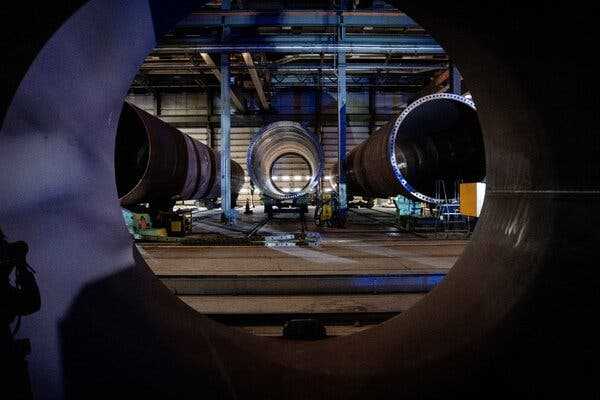Forecasters say the president’s clean-energy incentives will be more effective than they had originally expected, in part because of new federal regulations.
- Share full articleShare free access

The tax credits provided by the Inflation Reduction Act include incentives for manufacturers to build solar panel or wind turbine factories.
The estimated price tag for President Biden’s clean-energy and climate agenda has effectively doubled since the Inflation Reduction Act was signed into law a year and a half ago.
Nearly all of the increase is attributable to forecasters’ belief that the law will be more popular than they had originally expected, in part because of the way the Biden administration wrote certain regulations. That rising price tag may actually be good for reducing greenhouse gas emissions — and for the U.S. economy.
The Inflation Reduction Act, which Democrats passed on a party-line vote in summer 2022, includes tax credits and other subsidies for low-emission energy technologies that are meant to help wean the nation from fossil fuels.
Many of those credits are effectively unlimited, meaning the more people or companies choose to claim them, the more they will add to federal deficits. The uncapped credits include incentives for manufacturers to build solar-panel or wind-turbine factories, and for consumers to buy electric vehicles. Budget scorekeepers have to estimate how popular those credits will be, in order to forecast how much they’ll cost.
When the law passed, the nonpartisan Congressional Budget Office projected the energy components would add $391 billion to deficits over a decade, from 2022 to 2031. It revised those forecasts upward last spring and again on Wednesday. The office now projects the energy incentives in the law will cost about twice that much for that 2022 to 2031 period. For the next decade, through 2033, the budget office projects the provisions will cost more than $800 billion.
Here is what has changed, and why it matters for emissions, the economy and the budget.
Clean-energy manufacturing is booming.
The law has supercharged investment in American manufacturing facilities of some low-emission technologies, led by solar panels, advanced batteries and the full supply chain for electric vehicles.
We are having trouble retrieving the article content.
Please enable JavaScript in your browser settings.
Thank you for your patience while we verify access. If you are in Reader mode please exit and log into your Times account, or subscribe for all of The Times.
Thank you for your patience while we verify access.
Already a subscriber? Log in.
Want all of The Times? Subscribe.
SKIP ADVERTISEMENT
Source: nytimes.com



